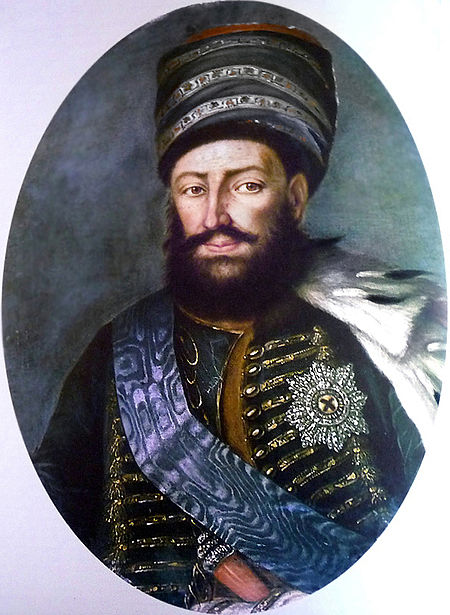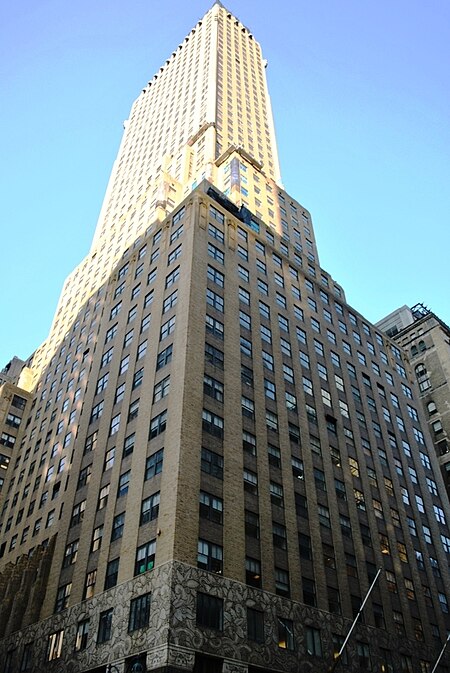DB Class V 160
| |||||||||||||||||||||||||||||||||||||||||||||||||||||||||
Read other articles:

Pietro Lagnesearcivescovo della Chiesa cattolicaMons. Lagnese il giorno della presa di possesso della diocesi di Ischia (2013). Duc in altum TitoloCasertaCapua Incarichi attuali Vescovo di Caserta (dal 2020) Arcivescovo di Capua (dal 2023) Incarichi ricopertiVescovo di Ischia (2013-2020) Nato9 settembre 1961 (62 anni) a Vitulazio Ordinato diacono21 settembre 1985 dall'arcivescovo Luigi Diligenza Ordinato presbitero1º maggio 1986 dall'arcivescovo Luigi Diligenza Nominato vescovo…

Wine with significant levels of carbon dioxide This article includes a list of general references, but it lacks sufficient corresponding inline citations. Please help to improve this article by introducing more precise citations. (October 2016) (Learn how and when to remove this message) A glass of champagne Sparkling wine is a wine with significant levels of carbon dioxide in it, making it fizzy. While it is common to refer to this as champagne, European Union countries legally reserve that wor…

دانشمنديون الأرض والسكان عاصمة سيواس الحكم التأسيس والسيادة التاريخ تاريخ التأسيس 1071[1] وسيط property غير متوفر. تعديل مصدري - تعديل الدانشمنديون هي عائلة تركمانية حكمت في المناطق الشمالية والشرقية للأناضول في القرن الحادي عشر والثاني عشر. وتمركزوا بشكل أساسي حول…

温贝托·德·阿连卡尔·卡斯特洛·布兰科Humberto de Alencar Castelo Branco第26任巴西總統任期1964年4月15日—1967年3月15日副总统若澤·馬利亞·奥克明前任拉涅里·馬齐利继任阿图尔·达科斯塔·伊·席尔瓦 个人资料出生(1897-09-20)1897年9月20日 巴西塞阿腊州福塔雷萨逝世1967年7月18日(1967歲—07—18)(69歲) 巴西塞阿腊州梅塞雅納墓地 巴西福塔雷薩卡斯特洛·布兰科陵寢[1]国…

Kermit MaynardKermit MaynardLahir(1897-09-20)20 September 1897Vevay, Indiana, Amerika SerikatMeninggal16 Januari 1971(1971-01-16) (umur 73)North Hollywood, Los Angeles, California, Amerika SerikatMakamValhalla Memorial Park CemeteryNama lainTex MaynardPekerjaanPemeran, pemeran penggantiTahun aktif1927–1962Suami/istriEdith Jessen (menikah pada 1924–1971, kematiannya) 1 anak Kermit Maynard (20 September 1897 – 16 Januari 1971) adalah seorang pemeran dan pemeran p…

Cet article est une ébauche concernant la politique québécoise. Vous pouvez partager vos connaissances en l’améliorant (comment ?) selon les recommandations des projets correspondants. 1980 1995 Référendum québécois de 1992 26 octobre 1992 Type d’élection Référendum sur le renouvellement de la Constitution du Canada Corps électoral et résultats Inscrits 4 872 965 Votants 4 033 021 82,76 % Votes exprimés 3 945 189 Votes nuls …

اتحاد شعب الجزيرة العربية البلد السعودية تاريخ التأسيس 1959 المقر الرئيسي بيروت الأيديولوجيا التيار الناصري تعديل مصدري - تعديل اتحاد شعب الجزيرة العربية أو اتحاد شعب شبه الجزيرة العربية هو تنظيم سياسي قومي عربي ديموقراطي معارض لنظام الحكم في المملكة العربي…

Cunicoli di ClaudioImbocchi del cunicolo MaggioreCiviltàromana EpocaI secolo - VI secolo LocalizzazioneStato Italia ComuneAvezzano, Capistrello AmministrazioneEnteSoprintendenza Archeologia, Belle Arti e PaesaggioConsorzio di bonifica Liri-Garigliano Sito webportalecultura.egov.regione.abruzzo.it/abruzzocultura/loadcard.do?id_card=114880&force=1&theme=aritnew Mappa di localizzazione Modifica dati su Wikidata · ManualeCoordinate: 41°59′18.7″N 13°26′00.2″E / &…

Italian architect and sculptor For the racehorse, see Michelozzo (horse). Not to be confused with Melozzo. MichelozzoFra Angelico's DepositionBornMichelozzo di Bartolomeo Michelozzic. 1396Florence, Republic of FlorenceDied7 October 1472Florence, Republic of FlorenceResting placeMonastery of San MarcoNationalityItalianKnown forSculpture, ArchitectureMovementEarly RenaissanceSpouseFrancesca di Ambrogio Galigari (7 children) Michelozzo di Bartolomeo Michelozzi (1396 – 7 October 1472) was an …

NGC 4013 dalam citra teleskop Hubble. NGC 4013 adalah galaksi spiral, mirip dengan Bima Sakti kita, terletak sekitar 55 juta tahun cahaya dari Bumi ke arah konstelasi Ursa Mayor. Dilihat kutub, itu akan terlihat seperti roda kincir hampir bundar. Bahkan pada 55 juta tahun cahaya, galaksi lebih besar dari bidang pandang Hubble.[1] Awan gelap debu antarbintang menonjol dalam gambar karena mereka menyerap cahaya bintang latar belakang. Sebagian besar awan terletak di bidang galaksi, membent…

Anaglyptus Anaglyptus mysticus Klasifikasi ilmiah Kerajaan: Animalia Filum: Arthropoda Kelas: Insecta Ordo: Coleoptera Famili: Cerambycidae Subfamili: Cerambycinae Tribus: Anaglyptini Genus: Anaglyptus Anaglyptus adalah genus kumbang tanduk panjang yang tergolong famili Cerambycidae. Genus ini juga merupakan bagian dari ordo Coleoptera, kelas Insecta, filum Arthropoda, dan kingdom Animalia. Larva kumbang dalam genus ini biasanya mengebor ke dalam kayu dan dapat menyebabkan kerusakan pada batang …

Degradation and loss of digitally-stored information A computer terminal set up with a laserdisc containing information from the 1986 BBC Domesday Project. The original Domesday Book is 900 years old and still legible, while the laserdisc is already considered obsolete and difficult to read. The digital dark age is a lack of historical information in the digital age as a direct result of outdated file formats, software, or hardware that becomes corrupt, scarce, or inaccessible as technologies ev…

The Honourable SirWiwa KorowiGCMG Gubernur Jenderal Papua Nugini ke-6Masa jabatan18 November 1991 – 20 November 1997Penguasa monarkiElizabeth IIPerdana Menteri Rabbie Namaliu Paias Wingti Julius Chan John Giheno Bill Skate PendahuluDennis Young (pelaksana tugas)PenggantiSilas Atopare Informasi pribadiLahir7 Juli 1948 (umur 75)Sunting kotak info • L • B Sir Wiwa Korowi GCMG (lahir 7 Juli 1948) adalah politisi asal Papua Nugini yang menjabat sebagai gubernur jende…

College ice hockey team season 2022–23 Penn State Nittany Lions women's ice hockey seasonCHA regular season championCHA tournament champion ConferenceCollege Hockey AmericaHome icePegula Ice ArenaRankingsUSA Today#15USCHO.com#11RecordOverall27–8–2Conference12–1–1Home1–1–0Road1–1–0Neutral0–0–0Coaches and captainsHead coachJeff Kampersal (7th season)Assistant coachesAllison CoomeyMakenna NewkirkCaptain(s)Rene GangarosaMallory UihleinKiara ZanonPenn State Nittany Lions women's…

У этого термина существуют и другие значения, см. Фатх-Али-хан (значения). Фатали-ханазерб. Fətəli xan, فتحعلی خان «Портрет Фатали-хана Кубинского», 1945 год. Худ. Саттар Бахлулзаде. Национальный музей искусств Азербайджана, Баку 6-й Кубинский хан 1758 — 22 марта 1789 Предшественни…

Bahasa Inggris Amerika SerikatWilayah Amerika SerikatPenutur[1]25,6 juta penutur bahasa Inggris L2 di Amerika Serikat (2003) Rumpun bahasaIndo-Eropa JermanikJermanik BaratIngvaeonikAnglo-FrisiaAnglikInggrisInggris Amerika UtaraInggris Amerika Serikat Bentuk awalInggris Kuno Inggris PertengahanInggris Modern AwalInggris Amerika Serikat Sistem penulisanLatin (alfabet Inggris)Braille Inggris Terpadu[2]Status resmiBahasa resmi di Amerika Serikat(32 negara bagian AS, 5 …

أم المؤمنين ريحانة بنت زيد ريحانة بنت زيد معلومات شخصية الميلاد العقد 590 الحجاز الوفاة 11 هـ / 632مالمدينة المنورة مكان الدفن البقيع، المدينة المنورة اللقب أم المؤمنين الزوج محمد (629–631) أقرباء أبوها: زيد بن عمرو بن قنافةأمها: إخوتها: الحياة العملية المهنة ربة منزل&…

Nongovernmental humanitarian organization Not to be confused with International Committee of the Red Cross. See also: International Rescue (disambiguation) International Rescue CommitteeLogoThe headquarters of the IRC are located within the Chanin Building in New YorkAbbreviationIRCPredecessorEmergency Rescue Committee & International Relief AssociationFormationJuly 24, 1933; 90 years ago (1933-07-24)TypeNon-governmentalLegal statusNon-profitPurposeTo assist people whose li…

Esempio di scrittura thuluth di Mehmed Izzet Efendi Preghiera islamica scritta in stile thuluth da 'Ala' al-Din Tabrizi Iscrizione in stile thuluth al centro della bandiera dell'Arabia Saudita Il thuluth (in persiano ثلث sols, Turco: sülüs, in arabo ثلث? un terzo) è uno stile della calligrafia araba inventato dal persiano Ibn Muqlah Shirazi, che apparve per la prima volta nell'undicesimo secolo d.C. (quarto secolo dell'Egira). Le forme dritte e angolari del cufic…

Si ce bandeau n'est plus pertinent, retirez-le. Cliquez ici pour en savoir plus. Cet article ne s'appuie pas, ou pas assez, sur des sources secondaires ou tertiaires (décembre 2022). Pour améliorer la vérifiabilité de l'article ainsi que son intérêt encyclopédique, il est nécessaire, quand des sources primaires sont citées, de les associer à des analyses faites par des sources secondaires. Cet article est une ébauche concernant une compétition de football. Vous pouvez partager vos co…





